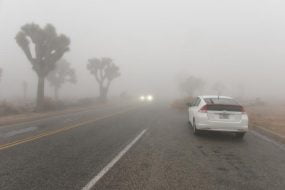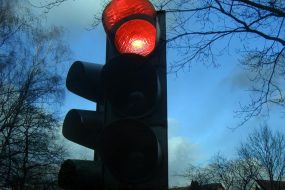
- A car’s engine needs to be in good condition to function well. When there is a problem with the engine, it can trigger a code that can be read with a scanner tool. The code should be able to tell you what is wrong with the engine so that you will know what to fix.
The p0128 code is a code that usually comes out when the engine temperature fails to reach its specific number. Once the car’s computer detects that the engine is not able to get to its normal temperature, it will trigger the code to alert you that there is trouble in paradise.
However, when the P0128 codes come on, you can still drive with it for a while before fixing it. You can also fix it immediately. The idea is to have it fixed as soon as possible but, how long can you drive with a p0128 code?
You can drive more than 100 miles with a P0128 code provided the cause of the code is a minor problem such as a thermostat that is stuck open, you might be able to drive for some time, but you should still fix the problem sooner rather than later.
What is a P0128 Code?
The P0128 code is a diagnostic trouble code (DTC) associated with the cooling system of your car. It’s a code that indicates that the engine coolant temperature is lower than the manufacturer’s specified parameters.
Meaning that your engine isn’t reaching the optimum operating temperature as quickly as it should. This can be caused by various issues, such as a malfunctioning thermostat, a faulty ECT sensor, or problems within the cooling system, etc.
An engine operates efficiently within a specific temperature range. When it’s too cold, the engine might not combust fuel properly, leading to poor performance and increased emissions. On the other hand, an engine that runs too hot can suffer from overheating, which can lead to severe damage.
In newer cars, engine temperature is closely monitored by sensors, including the ECT sensor, to ensure the engine operates within the desired temperature range. If the engine temperature doesn’t reach the specified level within a certain time, the P0128 code is triggered, indicating a problem in the cooling system.
How Long Can You Drive with a P0128 Code?
You can drive for more than 100 miles with a P0128 code. However, how long you can drive with a P0128 depends on the specific issue causing the code, the current condition of your vehicle, and your driving habits.
The P0128 code can be triggered by various issues, such as a malfunctioning thermostat, a faulty engine coolant temperature sensor, or problems within the cooling system. The severity of the problem will determine how far you can drive with the code.
For example, if the issue causing the code is a malfunctioning thermostat that is stuck open, you might be able to drive for some distance with it but should still fix the problem as soon as possible.
Meanwhile, the overall condition of your vehicle plays a crucial role in how long the vehicle can go with the code. A well-maintained car might handle the issue more gracefully than an older or less-maintained one. If your car is in excellent condition, it may be more tolerant of driving with the code for a limited distance.
The environment in which you drive your vehicle matters a lot. If you’re in an area with mild weather and shorter commutes, you might be able to drive with a P0128 code for a bit longer compared to someone in extreme temperatures or frequently stuck in stop-and-go traffic.
Risks of Driving with a P0128 Code
Driving with a P0128 code for an extended period of time can cause:
- Reduction in Fuel Efficiency: A car running below its optimal operating temperature tends to burn more gas leading to decreased gas mileage. This can be costly in the long run.
- Wear and Tear in the Engine: Running an engine at a lower temperature can cause increased wear and tear on engine components. This can lead to premature engine damage and shorten the lifespan of your vehicle.
- Emission Problems: An engine operating below its optimal temperature can produce higher levels of harmful emissions. This can lead to environmental concerns and potential issues during emissions testing.
- Reduced Engine Power: You may experience reduced engine performance, including decreased power and acceleration, which can impact your driving experience.
- Overheating Risk: If the P0128 code is caused by a bad thermostat or cooling system problem, there is a risk of the engine overheating, which can lead to severe damage and costly repairs.
How to Fix a P0128 Code
To fix a P0128 code, follow the procedure below:
Inspect the Cooling System
The first step in fixing code P0128 is by visually inspecting the cooling system. Look for any visible issues, such as coolant leaks, damaged hoses, or loose connections.
Check the coolant level in the radiator as well as the coolant reservoir to know whether they are at the correct levels. If they are not, top it up to the normal level they should be.
Test the Thermostat
The thermostat is a common cause for the P0128 code. A bad thermostat can prevent the engine from reaching the right temperature. So, testing the thermostat will confirm the problem for you. All you have to do is to:
- Start with a cold engine.
- Remove the thermostat and place it in a container filled with hot water.
- Observe the thermostat. It should open as the water temperature rises.
- If it doesn’t open, the thermostat is likely stuck and needs replacement.
In this case, you need to replace the thermostat to fix the P0128 code.
Check the ECT Sensor
The Engine Coolant Temperature (ECT) sensor measures the engine’s temperature. When this sensor goes bad, it can trigger the P0128 code. To check if the ECT sensor is the cause of code P0128 and possibly fix it, follow the procedure below:
- Find the ECT sensor which is usually located near the thermostat housing or on the engine block.
- Disconnect the electrical connector.
- Use a multimeter to measure the resistance of the sensor at various temperatures, comparing the readings to specifications as recommended by your car manufacturer.
- If the readings are out of specification, replace the ECT sensor.
Inspect the Radiator and Cooling Fan
Don’t forget to inspect the radiator to be sure it is in good condition. The same goes for the cooling fan. They need to be functioning properly. If the fan doesn’t turn on when the engine is hot, it can lead to cooling problems and trigger the P0128 code.
However, after diagnosing the root cause of the code and fixing it, clear the P0128 code from your vehicle’s computer system using your OBD-II scanner or disconnect your battery for 15 – 20 minutes to ensure that the problem has been resolved.
Take your vehicle for a test drive to ensure that the engine temperature is reaching the specified range and that the P0128 code does not reappear. Keep an eye on your vehicle for a while to ensure the issue does not return. If it does, you may need to recheck your repairs.
Cost of Fixing a P0128 Code
The total cost of fixing a P0128 code can vary depending on the brand and model of your car and the local labor rates. On average, you can expect to pay anywhere from $100 to $500 or more to fix a P0128 code.
The labor cost which can vary depending on the mechanic’s hourly rate and the complexity of the repair should be considered as well as the price of a new thermostat.
If you need to purchase another thermostat, the cost of the thermostat and any associated gaskets or seals add to how much it will cost to fix the code.
In the end, you may need to replace the engine coolant as part of the repair which will add to the overall cost. So, it is expected to spend $100 to $500 or more to fix a P0128 code depending on the brand and model of your car.
Conclusion
How long you can drive with a P0128 code depends on how serious the problem is, your driving skills and habits, the condition of your vehicle as well as weather conditions of your area. With that being said, you can drive for more than 100 miles with a P0128 code provided the issue is not too much.
However, the fact that you can drive with a P0128 code does not mean you should drive too long with it. You need to fix whatever is causing the code to come on so that your engine can run better without consuming your gas. It won’t be fun to drive a v8 with reduced engine power caused by a P0128 code. So the earlier you fix the problem, the better.









